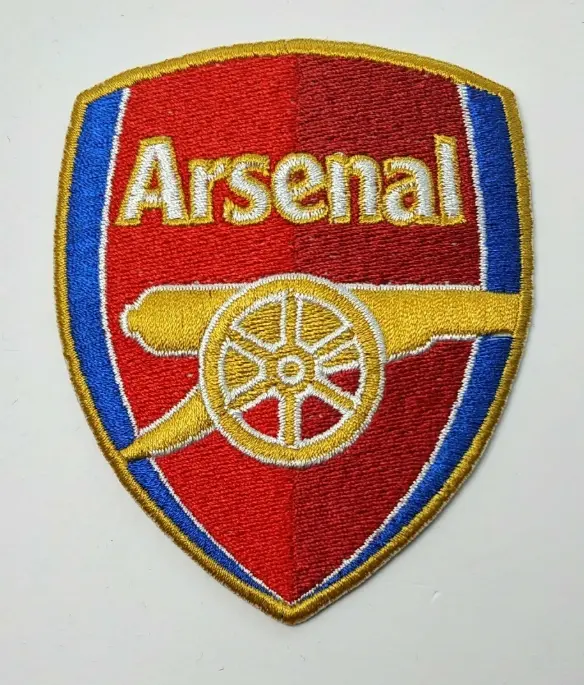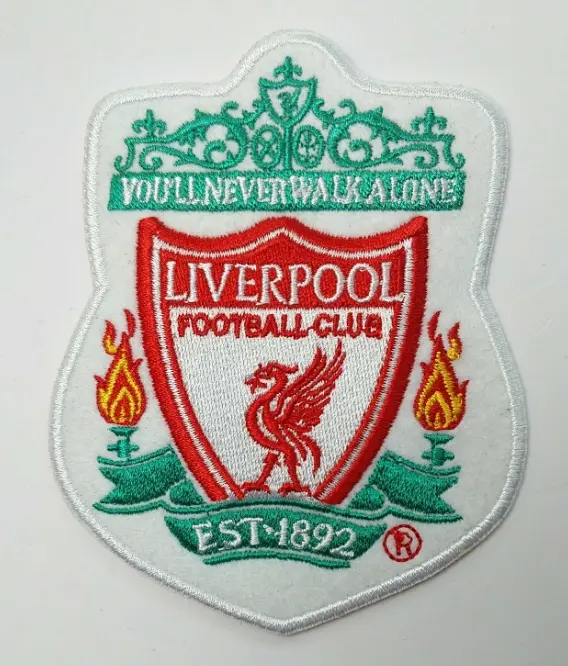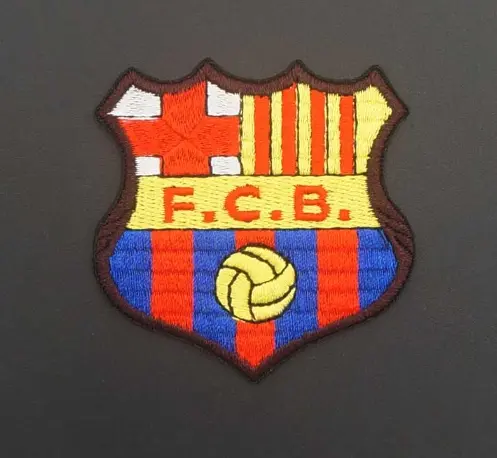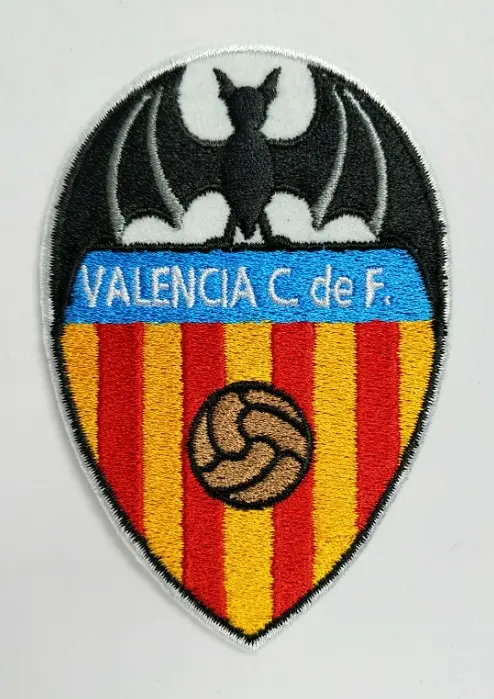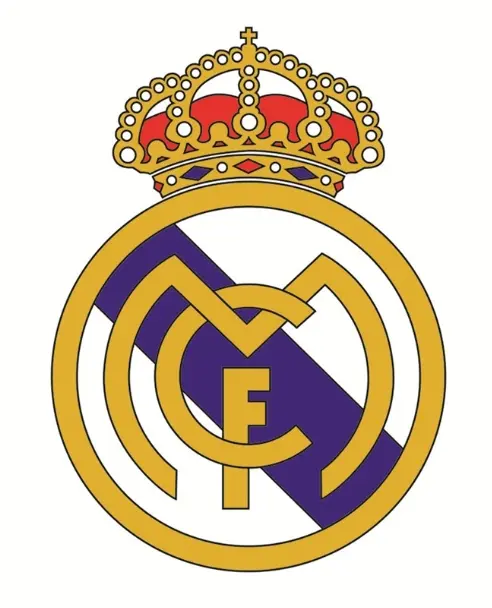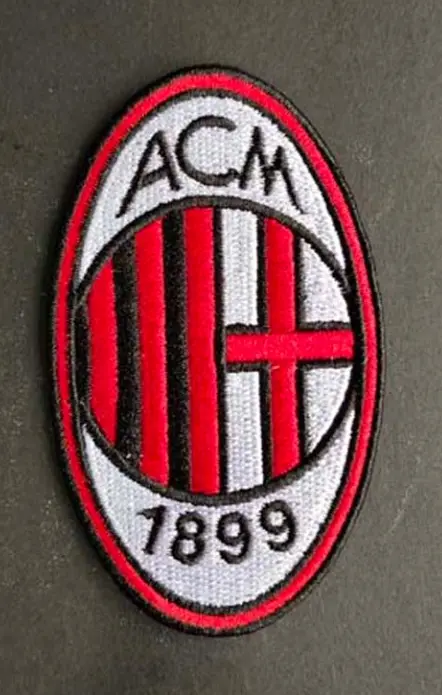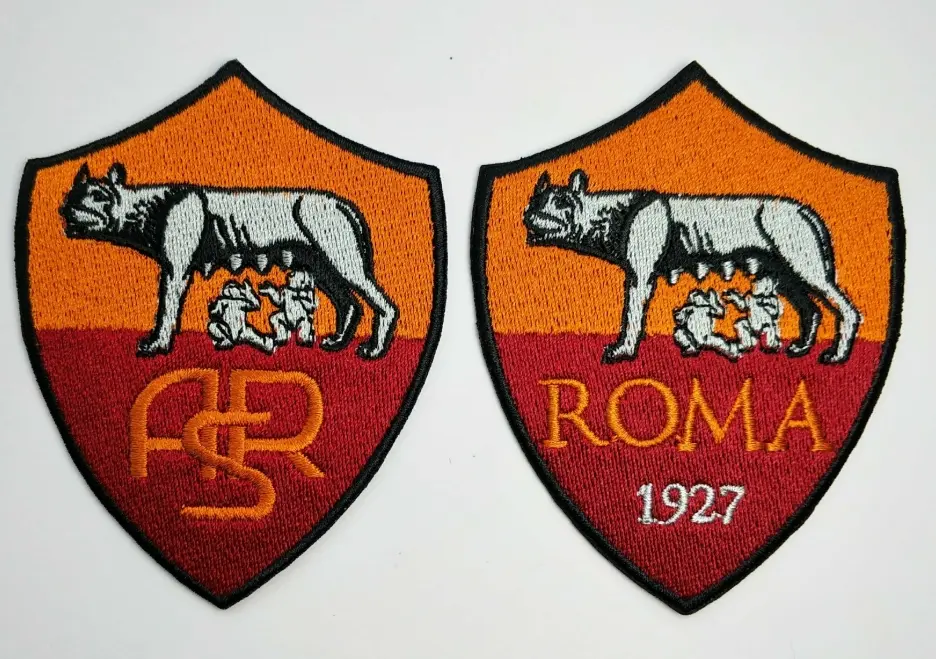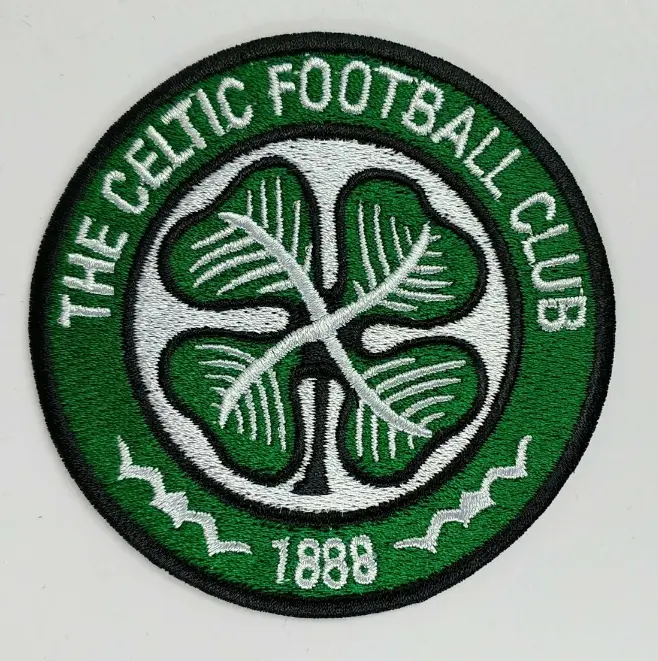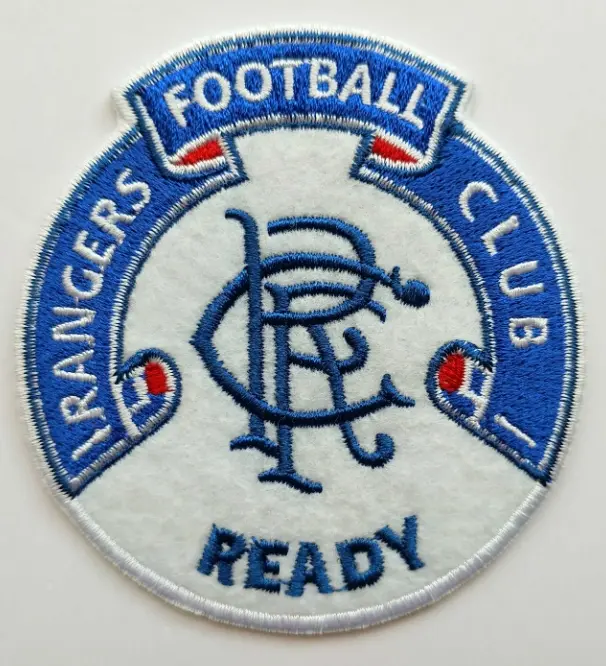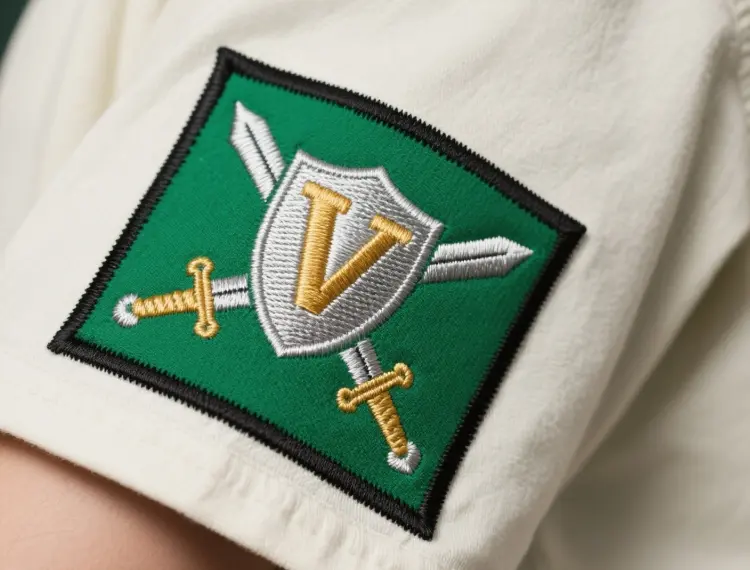World Football Club logos and patches are more than just visual identifiers, they carry the history, values and cultural identity of the club. Each logo has a unique story and symbolism behind it, reflecting the club’s origins, location and development. This study will explore the logos and patches of different soccer clubs around the world, analyzing their design features, cultural connotations and evolution.
The significance of soccer club logos
Soccer club logos are an important part of a team’s identity; they represent the club’s history, values and community ties. A good club logo is more than just visually appealing, it is a symbol of the club’s spirit and traditions.
Design elements of a logo
Common design elements for soccer club logos include:
Animal symbols: Many clubs choose fierce beasts such as lions and eagles as symbols to represent strength and courage. For example, the Chelsea Football Club logo includes a lion.
City or regional symbols: some clubs use the coat of arms or landmarks of their city as a design element, e.g. Arsenal Football Club’s logo incorporates elements of London.
Club nicknames or mascots: club nicknames and mascots are also common design elements. For example, Celtic’s logo includes their famous green cross and the word ‘CE’.
Numerical symbols: Some clubs incorporate numerical elements into their logos, such as the design of the eleven stripes representing the eleven players on the soccer pitch.
The cultural significance of logos
Soccer club logos are more than just pieces of design, they carry a wealth of cultural significance:
Community Identity: Club logos represent the club’s connection to the community in which it is based and are an important symbol of identity for fans.
Historical legacy: Many club logos are designed to include a nod to the club’s history and traditions.
Visual Identity: In soccer, club logos are important visual identifiers that differentiate between teams.
World Famous Football Club Logos Explained
European Football Club Logos
Europe is the birthplace of modern soccer and has many historic and uniquely designed club logos.
England Football Club Logo
English soccer clubs have their own distinctive logo designs, reflecting their unique club culture and historical background.
Chelsea FC: Chelsea’s logo is a lion standing on a soccer, symbolizing strength and team spirit.
Arsenal Football Club: Arsenal’s logo incorporates elements of the City of London’s coat of arms, reflecting the club’s strong ties to London.
Liverpool Football Club: Liverpool’s logo contains a seabird holding a soccer, symbolizing Liverpool’s port city character .
Spanish soccer club logo
The logo designs of Spanish soccer clubs incorporate strong elements of Spanish culture.
Spanish Football Club Logo
The design of the Spanish soccer club’s logo incorporates strong elements of Spanish culture.
Real Madrid Football Club: Real Madrid’s logo adopts the heraldic design of the Spanish royal family, reflecting the club’s royal background and noble temperament.
FC Barcelona: Barcelona’s logo includes elements of Catalan culture, reflecting the club’s close ties with Catalonia.
Valencia FC: Valencia’s logo design incorporates the traditional heraldic elements of the Valencia region, reflecting the club’s local characteristics.
Italian soccer club logos
Italian soccer clubs often incorporate rich historical and cultural elements into their logo designs.
AC Milan: AC Milan’s logo adopts a red and black color design, symbolizing power and passion.
Juventus Football Club: The Juventus logo has a simple but powerful design, reflecting the club’s resilience.
Roma Football Club: Roma’s logo design contains the symbolic elements of ancient Rome, reflecting the club’s connection with the history of ancient Rome.
Portuguese Football Club Logo
The Portuguese soccer club’s logo design incorporates elements of traditional Portuguese culture.
Benfica FC: The Benfica logo design contains elements of traditional Portuguese heraldry, reflecting the club’s local identity.
Porto Football Club: Porto’s logo design incorporates cultural elements from the northern region of Portugal, reflecting the club’s strong ties with the Porto region.
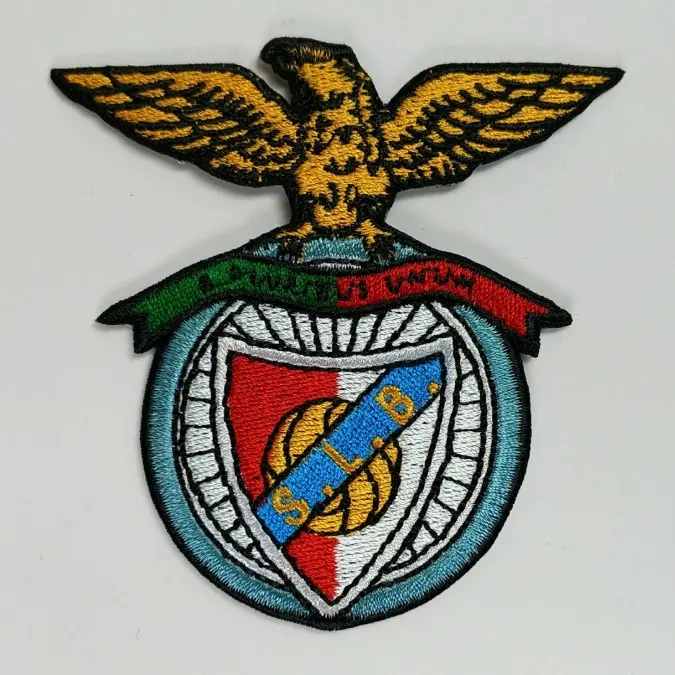
Scottish soccer club logos
The logo designs of Scottish soccer clubs often incorporate elements of traditional Scottish culture.
Celtic Football Club: Celtic’s logo design includes traditional Scottish cross elements, reflecting the club’s Scottish cultural background.
Rangers Football Club: the logo design of Rangers incorporates traditional Scottish heraldic elements, reflecting the club’s Scottish cultural identity.
South American Football Club Logo
South American soccer club logos are designed to incorporate the tropical and cultural characteristics of South America.
Brazilian soccer club logos
Brazilian soccer club logos are often designed to incorporate elements of the Brazilian rainforest and sunshine.
Brazilian National Football Team: The logo of the Brazilian national soccer team uses a color combination of green and yellow to symbolize the rainforest and sunshine of Brazil.
Botafogo Football Club: Botafogo’s logo design includes elements of traditional Brazilian culture, reflecting the club’s strong ties to Brazilian culture.
Flamengo Football Club: Flamengo’s logo design incorporates Brazilian passion and energy, reflecting the club’s unique style.
Argentina Football Club Logo
The Argentinean soccer club’s logo design incorporates elements of Argentina’s pampas and tango culture.
Argentina National Football Team: The logo of the Argentina National Football Team is designed in blue and white colors, symbolizing the sky and sea of Argentina.
Boca Juniors Football Club: The logo of Boca Juniors contains traditional cultural elements of Argentina, reflecting the local characteristics of the club.
River Plate: River Plate’s logo design combines Argentina’s pampas and soccer passion, reflecting the club’s unique style.
Chilean soccer club logo
The logo designs of Chilean soccer clubs often incorporate elements of the Chilean Andes and the sea.
Chilean National Football Team: The logo of the Chilean national soccer team uses a blue and white color scheme to symbolize the sea and sky of Chile.
Colo Colo Football Club: Colo Colo’s logo design includes elements of traditional Chilean culture, reflecting the club’s local identity.
Santiago Rangers FC: The Santiago Rangers logo design incorporates the Chilean Andes and the passion for soccer, reflecting the club’s unique style.
North American Soccer Club Logo
The design of the North American Soccer Club logo incorporates the multiculturalism and sportsmanship of North America.
U.S. Soccer Club Logos
U.S. soccer club logos are often designed to incorporate the spirit of freedom and national symbols of the United States.
U.S. National Soccer Team: The logo of the U.S. National Soccer Team uses a color combination of red, white and blue to symbolize the American flag.
Chicago Fire Soccer Club: The logo design of the Chicago Fire includes symbolic elements of the city of Chicago, reflecting the club’s strong ties to the city.
Los Angeles Galaxy FC: The LA Galaxy’s logo design incorporates elements of the sun and sea of Los Angeles, reflecting the club’s unique style.
Canadian Football Club Logo
The Canadian soccer club’s logo design incorporates the natural beauty and multiculturalism of Canada.
Canada National Soccer Team: The logo of the Canada National Soccer Team features a red and white color scheme, symbolizing the Canadian flag.
Toronto Football Club: Toronto’s logo design includes the Canadian maple leaf element, reflecting the club’s strong ties to Canada.
Vancouver White Caps Football Club: The logo design of Vancouver White Caps incorporates elements of Vancouver’s ocean and mountains, reflecting the club’s unique style.
African Football Club Logo
African soccer club logos are designed to blend the natural beauty and cultural traditions of Africa.
Nigeria Football Club Logos
Nigerian soccer club logo designs often incorporate elements of Nigeria’s rainforest and culture.
Nigeria National Football Team: The logo of the Nigeria national soccer team uses a color combination of green, white and green to symbolize the natural beauty of Nigeria.
Watford Football Club: Watford’s logo design incorporates traditional Nigerian cultural elements, reflecting the club’s local flavor.
Egyptian Football Club Logo
The Egyptian Football Club logo design incorporates elements of the pyramids and the Nile River in Egypt.
Egyptian National Football Team: The logo of the Egyptian National Football Team features a red, white and black color scheme that symbolizes the history and culture of Egypt.
Al Ahly Football Club: Al Ahly’s logo design includes traditional Egyptian cultural elements, reflecting the club’s local flavor.
South African Football Club Logo
The South African Football Club logo design incorporates the multiculturalism and natural beauty of South Africa.
South Africa National Football Team: The logo of the South Africa National Football Team uses the color combination of the South African flag to symbolize the multiculturalism of South Africa.
Orlando Pirates Football Club: The Orlando Pirates logo design combines the natural beauty of South Africa and the passion for soccer, reflecting the club’s unique style.
Asian Football Club Logo
The design of the Asian Football Club logo incorporates the long history and cultural traditions of Asia.
Japanese Football Club Logos
The logo designs of Japanese soccer clubs often incorporate elements of Japan’s cherry blossoms and traditional culture.
Japan National Football Team: The logo of the Japan National Football Team uses a color combination of red and green to symbolize the national flag and natural beauty of Japan.
Kawasaki Frontale Football Club: The design of the Kawasaki Frontale logo includes elements of traditional Japanese culture, reflecting the club’s strong ties to Japan.
Urawa Red Diamonds FC: The design of the Urawa Red Diamonds logo incorporates elements of traditional Japanese heraldry, reflecting the club’s unique style.
Korea Football Club Logo
The logo design of the Korea Football Club blends the traditional culture of Korea with the spirit of modernity.
Korea National Football Team: The logo of the Korea National Football Team uses a combination of red and blue colors to symbolize the Korean flag.
Jeonbuk Hyundai F.C.: Jeonbuk Hyundai’s logo design contains elements of traditional Korean culture and reflects the club’s local flavor.
Ulsan Hyundai Football Club: Ulsan Hyundai’s logo design incorporates traditional Korean culture and modern spirit, reflecting the club’s unique style.
Australian Football Club Logo
The Australian Football Club logo design incorporates the natural beauty and multiculturalism of Australia.
Australian National Football Team: The logo of the Australian National Football Team uses a color combination of green, blue and gold to symbolize the natural beauty of Australia.
Sydney Football Club: Sydney’s logo design incorporates the Australian kangaroo, symbolizing the club’s strong ties to Australia.
Melbourne Victory Football Club: Melbourne Victory’s logo design combines the natural beauty of Australia with the passion of soccer, reflecting the club’s unique style.
The Cultural Significance of Football Club Patches
Soccer club patches are more than just items for fans to show their support, they carry a wealth of cultural significance.
The design and production of patches
The design and production process of soccer club patches reflects the love and respect for the club:
- Material selection: Traditional soccer club patches are mostly made of woven materials, while modern ones are more often made of iron-on materials. For example, some patches are made from 100% polyester yarn, which is durable and easy to sew onto jerseys.
- Personalization: modern patch-making services offer personalization options, allowing fans to choose colors, patterns, and other elements to their liking.
The place of patches in fan culture
Soccer club patches have an important position in fan culture:
- Identity: Patches are an important way for fans to express their support for the club and their identity.
- Collecting value: Many fans collect patches of different clubs as a sign of love and remembrance of soccer culture.
- Community Connection: Patches have also become a medium for fans to communicate and build connections with each other.
The Evolution of Football Club Logos and Patches
The design and meaning of soccer club logos and patches have changed significantly over time.
Historical evolution
The historical evolution of soccer club logos and patches reflects the development of soccer culture:
- Early designs: Early soccer club logo designs were relatively simple, containing mainly the club name and basic graphics.
- Modern designs: Modern soccer club logo designs are more complex and diverse, incorporating more cultural elements and design techniques.
Logos and Patches in the Digital Age
The digital era has brought new development opportunities and challenges for soccer club logos and patches:
- Digital logos: Many clubs have developed digital logos for display on social media and digital platforms.
- Virtual patches: some clubs have introduced virtual patches where fans can show their support for the club on digital platforms.


